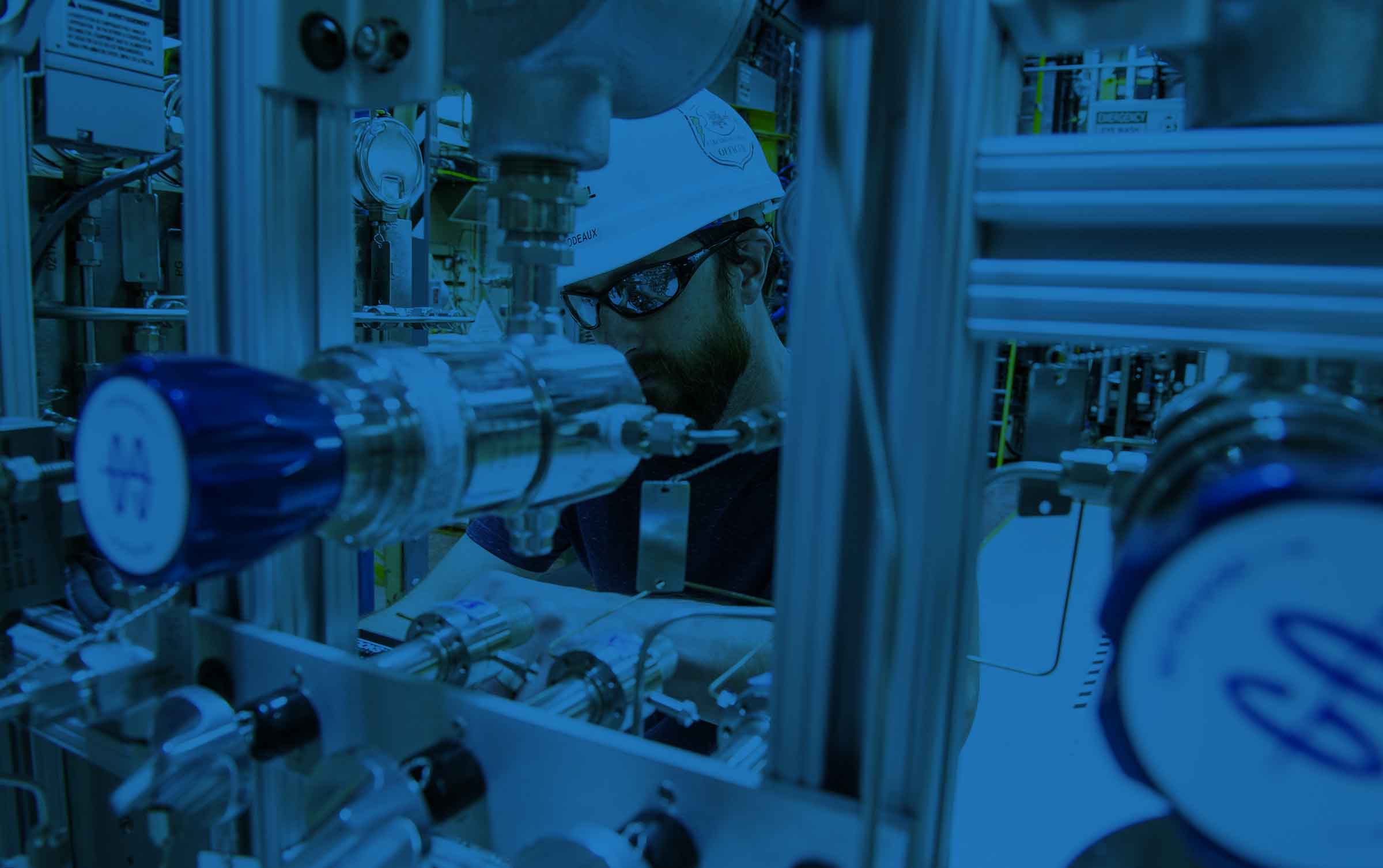Electrochemical Conversion of Biomass

Developing alternative biomass conversion processes through electrocatalysis, microbial electrolysis, and bioelectrosynthesis
Overview:
Electro-catalytic processes are inherently more efficient than thermo-catalysis and offer the advantage of incorporating electrons from renewable electricity into fuels and chemicals, thus providing a route to store excess renewable energy produced during off-peak hours. Within ChemCatBio, two different electro-catalytic approaches are being developed: (1) electro-fermentation and bioelectrosynthesis and (2) electrocatalytic upgrading of biomass-derived intermediates in proton exchange membrane cells.
Electro-fermentation and bioelectrosynthesis combine the specificity offered by biology with the speed of moving electrons through solution and electrodes via existing electrochemical means along with utilization of the entire biomass feedstock by making use of wastes generated in biorefinery. Through the integration of biocatalysis and electrocatalysis, biomass-derived intermediates can be upgraded or converted into chemical building blocks using electrons derived from waste products or low-value fermentation and pyrolysis intermediates. The recent discovery of the ability of microbes to communicate with electrodes has resulted in the potential to extract or donate electrons using electrodes from/to chemical molecules. Coupling this with microbial diversity and the vast library of genes, which can synthesize novel molecules via biocatalysis, the tools provide a new paradigm in synthesis of bioproducts. These tools can be used with any microbial or enzyme catalysts developed by industry or other laboratories, to enhance the yield, titer, or productivity of target fuels and chemicals.
Electrocatalytic upgrading of biomass-derived intermediates in proton exchange membrane cells provides the opportunity to perform hydrogenation and deoxygenation at high efficiency under low temperature and pressure conditions. This approach utilizes systems similar to H2 proton exchange membrane fuel cells and has a number of advantages over existing conversion processes, including: protons can be produced from either H2 or H2O on the anode, applied potential results in efficient production and utilization of reactive hydrogen, a flow-through design minimizes mass-transfer limitations as compared to traditional electrochemical reactors, applied potential can be used to control rates and selectivities, and electrogenerative operation is possible when H2 is fed to the anode. This approach can be applied to pyrolysis oil, hydrothermal liquefaction oils, and aqueous waste streams.
Additional Information:
Metabolomics and Bioconversion — Oak Ridge National Laboratory
Electrochemical Conversion and Fuel Cell R&D Facilities — National Laboratory of the Rockies
National Laboratories:
Argonne National Laboratory
Idaho National Laboratory
National Laboratory of the Rockies
Oak Ridge National Laboratory
Pacific Northwest National Laboratory